Days of thunder
The Sukhoi Su-30MKI and Lamborghini Huracán both deliver performance and agility that’s off the charts. We get them together on the same bit of tarmac
Published On Dec 31, 2014 07:00:00 AM
44,271 Views
Follow us on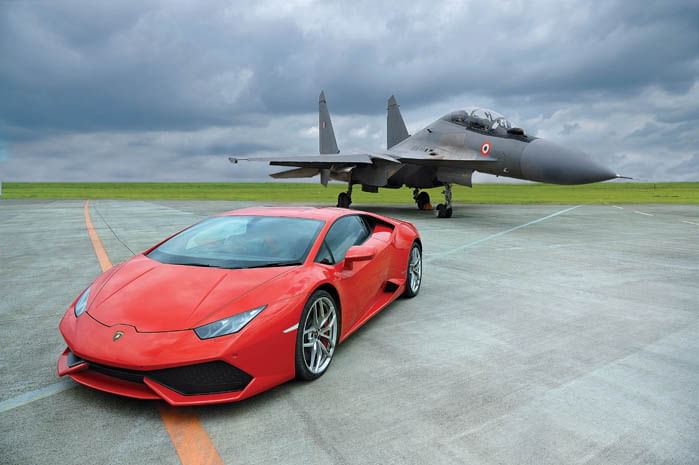
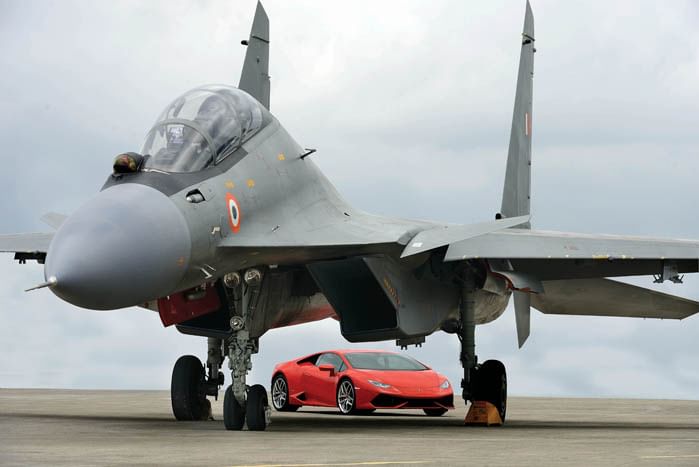
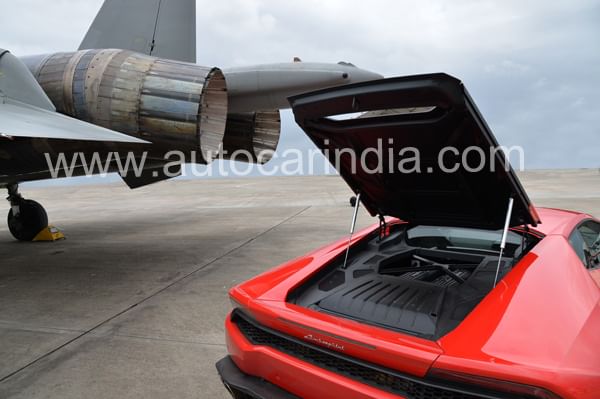
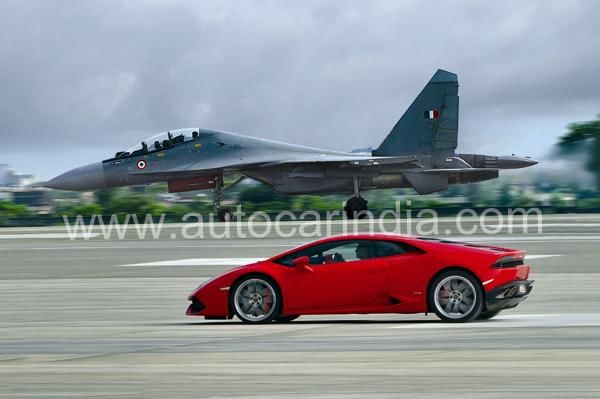
The thin, piercing whine of the Sukhoi taxiing across the runway drills its way deep into my head. The twin AL 31F turbines may only be at idle, but the IAF’s big bird is so close, we can actually feel its ‘breath’. Hot gases waft back from the nozzles as the Sukhoi spins around and heads off towards the runway, and the harsh smell of aviation kerosene fills our nostrils as the fighter goes by. Only when we are up close do we see how easily the Su-30 dwarfs the Huracán; it is simply massive. So big is it, I have to look up out of the Lambo’s wide windscreen to see all of it. And it is seriously imposing too. Its dragon-like head and fierce eagle-eye stare are enough to give you the chills, and one look at those massive engines and you know this bird means business.
The Sukhoi, however, is clearly not in its element here, taxiing at low speeds. It gets tossed around on the taxiway, the short wheelbase causes it to bob and pitch, and the wings and huge tails flex and shake as it goes past.
The Su-30 then turns and stages up before the runway. On instruction from my passenger with a walkie, I move up and place the Huracán on a parallel taxiway. Hopefully both vehicles will stay in the same frame long enough to get a good photo. “Be ready,” says my passenger, as I hear the sound of the engines change. The Sukhoi is now at a considerable distance, but the roar of the twin engines spooling up is deafening even from here. First the whine amps up to a scream, and that’s accompanied by the low roar as the rotating turbines start to go faster. In the cockpit, the pilot is using the aircraft’s own version of launch control. He is holding down the high-pressure cocks or double brakes while he pushes the throttles wide open, allowing the engines to run up to full dry thrust. The Sukhoi, now only held back by its brakes, takes the strain. We’re already at the point where I can’t hear myself speak, the scream of the engines is deafening; it’s all hand signals in the cabin now. My throat dries up, and a thin film of sweat coats my palms.
I too put my left foot on the brake, push the engine RPM up and get set to launch. The only reason I can tell the Lambo’s engine is spinning faster is because the tachometer needle jumps up. Then comes the ground-shaking, bowel-loosening thunder, as the pilot releases the brakes, lifts up the catch on the throttles and pushes them all the way forward, igniting the afterburners. Lighting up the ’burners any earlier would fry the brakes in an instant.
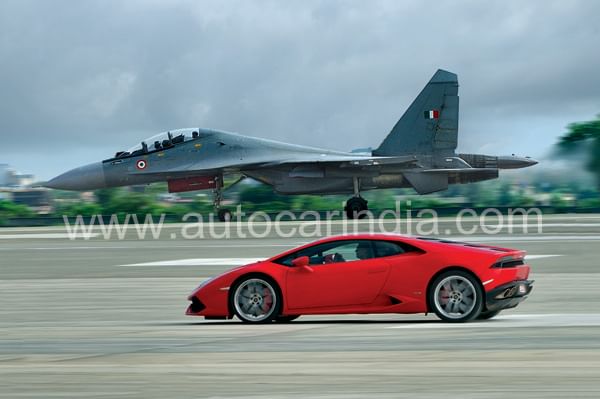
I jump off the brakes too and the Huracán leaps forward with huge energy that it somehow manages to sustain. This comes as a bit of a shock to my passenger, who is also a Sukhoi pilot himself. Our heads get tossed back, the seat squeezes us hard in the back and initially the Lambo leaps ahead as the thrust from the Sukhoi’s afterburners takes time to build. The Huracán’s 602bhp, four-wheel-drive system and 0-100 time of just 3.2sec certainly help here. Physics lesson: piston engines respond faster than turbines.
The Sukhoi, however, starts to pull back the advantage and closes the gap as the full force of its 55,000lb wet thrust comes in. Then, just as we begin to draw level, I have to put my foot on the brake pedal; we run out of taxiway. Hopefully we’ve got our shot.
A handful of seconds after we’ve come to a full stop, the Sukhoi points its nose up and thunders into the sky, retracting its claws like a giant eagle. Ground speed at that time should have been 270 or 280kph. What a display of raw power. The aircraft, in its current configuration, must have weighed approximately 25 tonnes, and the pilot, had he wanted to, could have pointed the nose straight up and climbed vertically into the sky, disappearing into the cloud layer in a matter of seconds. “Performance is so strong, we have to get off the ’burners soon after we take off, or we’ll go supersonic over the city; a huge problem,” say the pilots.
For pure speed, however, there’s no comparison. Whereas the Huracán will top out at a seriously quick 325kph, the Su-30MKI can run all the way up to Mach 2.35, over twice the speed of sound. That’s in excess of 2,500kph! Fast jet? Yeah, this is it.
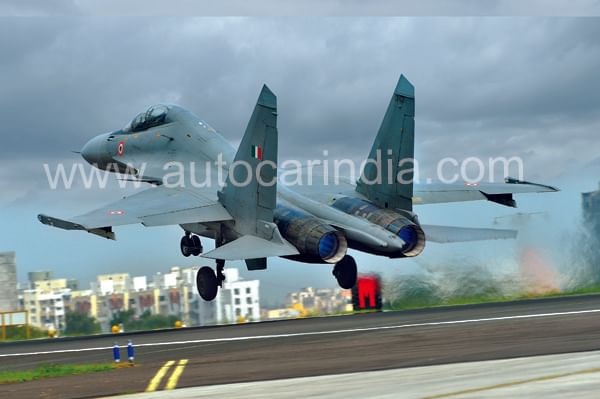
But raw speed is not enough. Not for the Sukhoi Su-30MKI or the new Lamborghini. Agility is just as important, and as any good engineer will tell you, it is even more difficult to attain. The new Huracán starts from a clean sheet of paper and the chassis uses a combination of high-tech aluminium and carbonfibre-reinforced polymer (CFRP). The X-shaped brace in the engine bay is also made from CFRP. The hybrid chassis of the LP610-4 weighs less than 200 kilograms, and that’s seriously light. The Sukhoi, for example, carries several tonnes of aviation kerosene alone.
The Lamborghini also uses four-wheel drive for better traction. This means it puts its power down to the road better and can accelerate out of corners quicker. This new car uses an all-new four-wheel-drive system that is different from the mechanical unit used in the Gallardo. Under normal conditions, around 70 percent of drive is sent to the rear wheels. However, should traction at the rear be lost, up to 50 percent of torque is transferred to the front wheels in seconds via a wet clutch.
Our Sukhoi Su-30s are known as the MKI; the ‘I’ stands for India. Where the normal practice is to export watered-down weapons systems, the MKI is clearly one of the best air superiority weapons platforms in the world today. What has made all the difference is the Indian Air Force’s push to get absolutely the best in terms of agility, avionics and weapons systems; hats off to them.
Let’s start with the basic airframe. An evolution of the very successful Su-27, which was designed to take on the American F-15 Eagle, the twin-tail, twin-engine Sukhoi set several records soon after it was introduced. Among the 30 or so it broke was its simply unreal run to 15km in 1m16s. Think about that for a bit.
So performance has always been a big strength. Part of this is due to the high-thrust engines. What imparts agility, however, is the smart design. On the Sukhoi, it’s not just the wings that provide a lifting force, but also part of the fuselage or body of the aircraft that blends with the wings. Known as the ‘wing root glove’, this area also creates lift, and that means the aircraft can use a smaller, more efficient wing.
Also improving lift is another aerodynamic trick known as a vortex. Here the sharp tip of the nose is positioned so that it helps generate a powerful swirling vortex that runs over both wings on either side of the nose. This creates an area of low pressure over the wings, again increasing lift. You can see the vortex created with the naked eye if the aircraft takes a tight turn on a cloudy day. And this helps stability at supersonic speeds too.
The Sukhoi also uses fly-by-wire, where the pilot has no direct mechanical control over the aircraft, but rather issues ‘digital commands’ via his controls. This has many advantages. For one, it allows the designers to make the aircraft statically unstable, which allows it to turn tighter and harder. This inherent instability is created by actually bringing the aerodynamic centre of the aircraft ahead of its centre of gravity. And it allows the aircraft to be flicked around violently at will. What it also does is allow the aircraft’s computer to set limits on what the aircraft can and cannot do, in an effort to prevent fatal flying errors.

Whereas we often hear the term drive-by-wire in the car industry, this is a huge stretch. The only real ‘by wire’ system we encounter in cars today is a digital throttle; as on the Huracán. Here, your right foot issues instructions to the engine, but they are only carried out by the car’s ECU. Mercedes had installed ‘digital’ Sensotronic (SBC) brakes on its E-class a few years ago, and the car was available in India too, but it hasn’t carried forward the technology to the current generation of cars. As far as digital steering is concerned, it is years away, though Electronic Stability Control (ESP) that uses differential braking to steer a car out of a slide is a similar system. Just like the aircraft, the Huracán has an ESP system set up in stages. You can set the car in Corsa or track mode, and this allows it to slide around quite a bit before the ESP system begins to plays ‘catch’.
The Su-30MKI also uses two other technologies to improve agility, both controlled fully by the fly-by-wire system. Up front, the Su-30MKI uses a pair of canards or winglets near the canopy and at the rear, thrust vectoring nozzles are used. The canards help in situations where the aircraft needs to turn tighter and the thrust vectoring nozzles also help steer the aircraft. The nozzles move 15 degrees up or down and across as well. And the left and right engines even work independently of each other like a pair of hands pointing and controlling thrust independently. This has allowed the Su-30MKI to be the first aircraft in the world to do extreme manoeuvres, the likes of which have only thus far been seen on experimental aircraft.
One famous move is known as the Cobra. The aircraft’s nose pitches up at an angle of 110 degrees while flying forward. The Su-30MKI can do a double twist, it can keep station on a target while turning around it – sort of like doing donuts in the air with a 30-tonne bus, and the MKI, uniquely, can even execute a controlled flat spin. YouTube Sukhoi Su-30MKI to see the IAF’s finest smash the laws of physics.
The Lamborghini, on the other hand, uses a system called torque vectoring on the rear axle. The system kicks in only around corners and allows the outside wheel of the car to be sent additional power in an effort to point it into the corner better. And the Huracán uses plenty of aero aids as well. The ‘spades’ under the nose help control the airflow and there’s even a splitter at the back to make the rear of the car squat down.
Unlike the Sukhoi, however, the Huracán can’t pull a sustained 9g, you don’t need to strap yourself into an anti g-suit before you climb in, and while it has navigation, there’s no phased-array radar that can track targets several kilometres away.
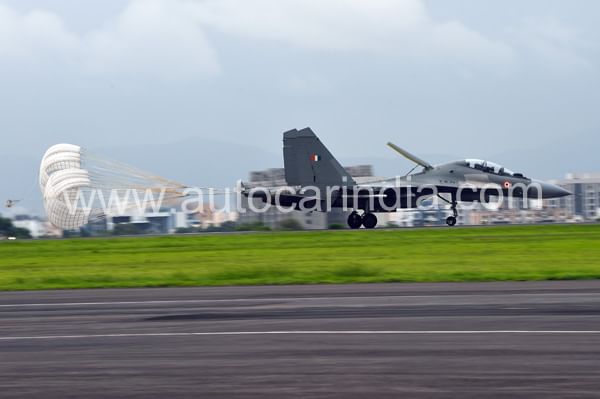
The updated-for-India Su-30MKI in fact has a seriously powerful radar, an array of some of the the most effective air-to-air missiles in the world, helmet-mounted gunsights, infrared and laser sights, and it even has the firepower and accuracy to take out large-sized ground and naval targets.
The Lamborghini Huracán and the Sukhoi Su-30MKI are two of the greatest machines in the world – both at the cutting edge. They are very similar. Both chase ultimate speed and agility, both look absolutely brilliant and both, we are sure, are seriously thrilling to operate. But they are different too. While one is the master of the skies, the other does its best to stay glued to the tarmac. Summing up the on-ground performance is quite easy too. Whereas the Lambo ‘takes off’ from rest like a bat out of hell, the rate of acceleration drops the faster you go. It’s exactly the opposite for the Sukhoi – up until a certain speed at least. But just to get them together on the same piece of tarmac on the same day – what a thrill!
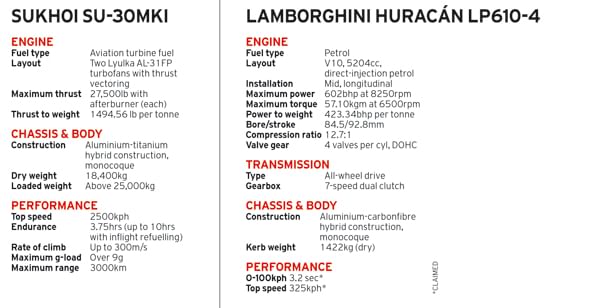
Copyright (c) Autocar India. All rights reserved.



Comments
Member Login
Personal Details
No comments yet. Be the first to comment.